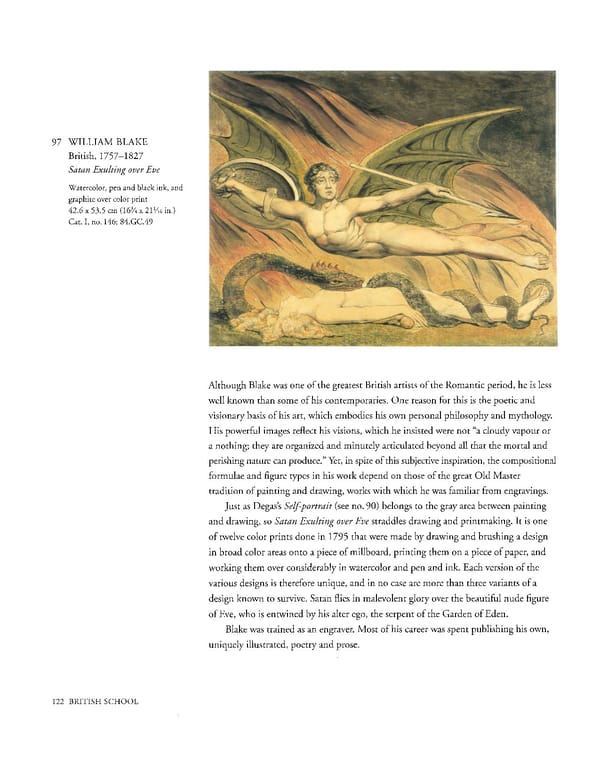97 WILLIAM BLAKE British, 1757-1827 Satan Exulting over Eve Watercolor, pen and black ink, and graphite over color print 42.6 x 53.5 cm (16¾ x 21 1/16 in.) Cat. I, no. 146; 84.GC.49 Although Blake was one of the greatest British artists of the Romantic period, he is less well known than some of his contemporaries. One reason for this is the poetic and visionary basis of his art, which embodies his own personal philosophy and mythology. His powerful images reflect his visions, which he insisted were not "a cloudy vapour or a nothing; they are organized and minutely articulated beyond all that the mortal and perishing nature can produce." Yet, in spite of this subjective inspiration, the compositional formulae and figure types in his work depend on those of the great Old Master tradition of painting and drawing, works with which he was familiar from engravings. Just as Degas's Self-portrait (see no. 90) belongs to the gray area between painting and drawing, so Satan Exulting over Eve straddles drawing and printmaking. It is one of twelve color prints done in 1795 that were made by drawing and brushing a design in broad color areas onto a piece of millboard, printing them on a piece of paper, and working them over considerably in watercolor and pen and ink. Each version of the various designs is therefore unique, and in no case are more than three variants of a design known to survive. Satan flies in malevolent glory over the beautiful nude figure of Eve, who is entwined by his alter ego, the serpent of the Garden of Eden. Blake was trained as an engraver. Most of his career was spent publishing his own, uniquely illustrated, poetry and prose. 122 BRITISH SCHOOL
 Masterpieces of the Getty Museum: Drawings Page 122 Page 124
Masterpieces of the Getty Museum: Drawings Page 122 Page 124